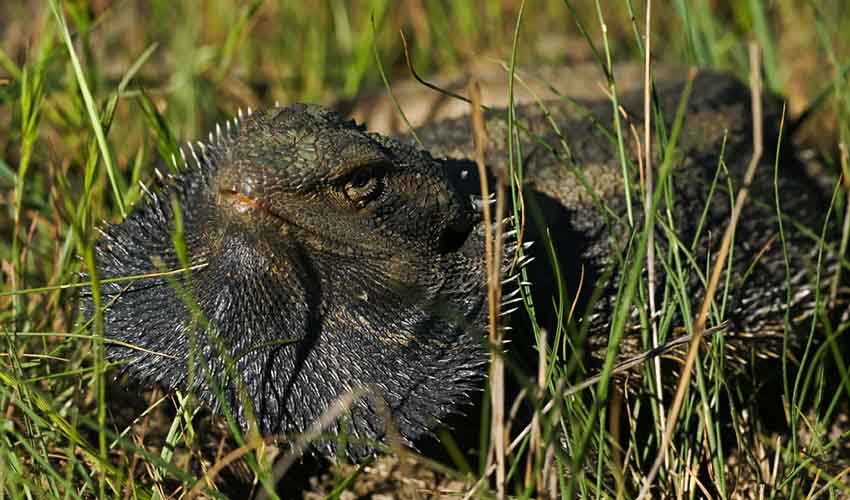Pogona – Bearded dragons
Its pouch of loose skin under its throat can inflate dramatically, changing color from a calm yellow to a bold black depending on its mood
Commonly known as bearded dragons, this genus encompasses a group of lizards that are native to Australia. These reptiles are beloved around the world, particularly in the pet industry, for their distinctive looks and sociable nature. Members of this genus are easily recognized by their broad triangular heads, stout bodies, and iconic “beards” – patches of spiky scales under their throats that can puff up and darken when the animal is stressed or threatened.
Pogona species vary in size, typically ranging from 12 to 24 inches in length, depending on the species. For example, the Central bearded dragon (Pogona vitticeps), the most popular in the pet trade, can grow up to 24 inches. These lizards have muscular, flat bodies with strong limbs equipped for climbing and digging. Their skin is covered in coarse scales that can be a range of colors, including shades of brown, tan, and grey, often patterned with stripes or spots that help them blend into their natural arid environments.
One of the most interesting features of bearded dragons is their ability to communicate through body language. They perform a variety of gestures such as arm waving, head bobbing, and beard puffing. Arm waving generally serves as a submissive gesture, often seen in juveniles or females acknowledging a dominant male. Head bobbing can be more aggressive, used by males to assert dominance or attract mates. These behaviors make bearded dragons particularly engaging pets, as they seem to “interact” with their owners and other dragons.
The environment of bearded dragons is typically arid or semi-arid, ranging from deserts to dry forests and scrublands. They are well adapted to these harsh climates, demonstrating behaviors such as basking in the intense sun to regulate their body temperature and burrowing into cool earth to escape the midday heat.
Species in this genus
Central bearded dragon
Its beard isn’t just for show — they use it to communicate a variety of emotions
Eastern bearded dragon
When basking, they often sit upright and open their mouths wide, almost like they’re smiling at the sun



